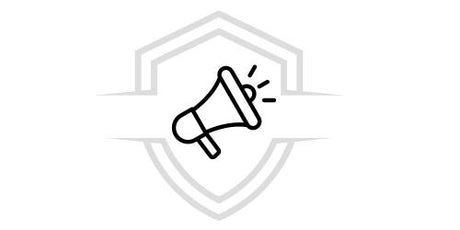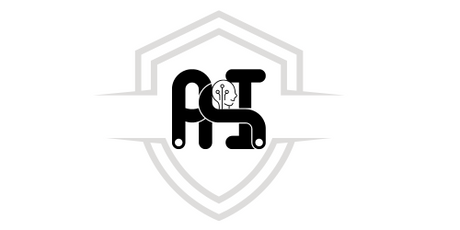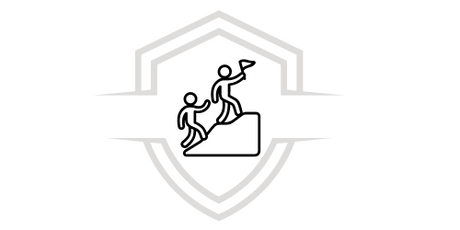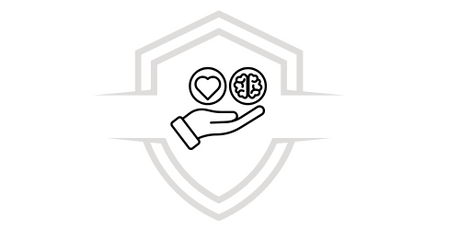It was enough for us to read this sentence to detect DEADLY flaws in Advertising...
We received this quote a few days ago. We asked a student to “sell” us his business:
“I am a photographer, I cover all kinds of events: weddings, birthdays, corporate events, etc. My audience is adults who live in Lima.”
-Arturo L..
This student was complaining that his Instagram advertising wasn’t working. The same complaint that all students in our “Sell More” program have when they start out.
We only needed to review that sentence to detect FATAL errors, which have nothing to do with Instagram or Facebook: they are strategic .
Sadly, this happens to a large number of entrepreneurs and small businesses. They make strategic mistakes, then their ads don't work and they blame Facebook or Instagram for not converting enough.
If you are also making these mistakes, our goal is to help you solve them with this article or at least improve your conversions in some ways.
We will review the 5 mistakes that destroy your digital advertising
For each one we will show you the strategy to solve it:
- First Mistake: Offering your product or service DIRECTLY.
- Second Mistake: Not getting people who WANT to pay you.
- Third Mistake: Not using this key step BEFORE selling.
- Fourth Mistake: Not creating a REALLY EFFECTIVE ad.
- Fifth Fault: Investing WITHOUT reducing the risk of losing.
Our goal is that the knowledge you receive in this article will be a turning point for your advertising. We only ask that you do two things:
- Read to the end
- Take action
Shall we start with the 5 mistakes that kill your digital advertising ? Ok, this is the first mistake…
FAILURE 1: DIRECTLY offering your product or service in advertising
Back to Arturo's case, I asked him for more details about his wedding photography service. Why should someone hire him? This is what he replied:
“Because I have 8 years of experience, I deliver all the photos I take (even the unedited ones), a personalized album, sharing on Google Drive and framing service”
What is the fault?
The mistake Arturo makes here is directly promoting his service: its features, how it works, among other things.
However, this does NOT interest your audience or potential client. What do I mean?
The ONLY thing your audience or potential customer cares about is how your product or service will help them feel better, whether by solving something they don't like or getting something they want.
For example, you are not really interested in our G-Talent Online Academy , what you are interested in is how it will help you SELL MORE and not “likes”.
To achieve the above, you must deeply understand your audience:
- What is your initial situation regarding what your product/service does?
- What problem do you want to solve or eliminate? What are you missing?
- What do you want to achieve?
- How do they feel now? How will they feel when they have your product/service?
What would be the case for Arturo?
If your service is wedding photography, your client is: the bride. So what does a bride really want?
This is what Arturo discovered after his investigation:
The bride wants to remember, forever, every detail, every moment, every emotion of one of the most important days of her life. She wants you to look at everything as if it were her own eyes so she can capture those moments.
So, she needs to know that you, as the photographer, will be emotionally and fully committed to her wedding. You need to make her realize that for you it won't be just another wedding, but that it will be a magical and special wedding.
Do you see the difference? We try to get into the mind of the public and try to identify what they really want.
If you succeed in doing this, and you use this in your advertising, your audience will feel like you are reading their minds, that you are speaking to them.
But what should you do if you don't know who your ideal audience is?
We will answer that in the next ruling…
FAILURE 2: Not finding people who WANT to pay
To find your ideal audience, there are two fundamental and important initial steps:
1. Choose a niche
2. Profitability filter
To do this, I am going to share with you a couple of techniques, normally reserved for our students.
Technique #1 : Select a niche using the Exclusive Interest method.
The first thing you need to do when choosing a niche is to create a demographic profile of your ideal audience:
- Sex
- Age
- City or country
- Socioeconomic level
- Inter alia
For example, a demographic profile for a piano lessons service for children could be: Working mothers in Bogotá with a medium-high income level.
Next comes a very important step. Of the people who fit that profile, some will be very interested in your product or service. How do you find them?
This is the Exclusive Interest method: you have to answer the following question: What interests does my ideal audience have that no one else has?
One way to find those interests is to dig into a general interest. Few people know that there is a tool on Facebook that helps you extraordinarily at this stage... Audience Insights gives you global information about two groups of people (one of people connected to your page and another made up of people on Facebook ) so that you can create content that captures their attention and you can easily find people similar to those in your current audience.
For example, let's say you want to find football fans, you can use Real Madrid players as interests. The process would be as follows:
- Choosing a generic interest would be “Karim Benzema or Eden Hazard”, because everyone knows them, even if they are not interested in football.
- Selecting a medium interest would be “Sergio Ramos”, almost everyone who knows about football knows him, even if they are NOT fans.
- Setting a deep interest would be “Isco” as only football fans will know who he is.
Therefore, by selecting people interested in “Isco”, you guarantee that they are football fans.
Once you find a niche, comes the second part.
Technique #2: Profitability Filter: Is There Money for You in Your Niche?
Now you need to know if a niche is profitable, that is, if there is money or willingness to pay for you in it.
To do this, you must answer two questions:
1. Are people in this niche ABLE to pay for your product/service? I.e. is there money in this niche?
2. Are people in this niche WILLING to pay for your product/service? In other words, is there money left for YOU in this niche?
If any of the answers are negative, you should look for another niche that IS profitable.
Let's look at some examples:
1. Small businesses in Quito, that need consulting in marketing strategies:
– CAPACITY: NO
– DISPOSITION: NO, strategic consultancies are not normally appreciated.
– PROFITABLE: NO, we must look for another one
2. Law firms in Santiago that need to create Facebook campaigns:
– CAPACITY: YES
– PROVISION: NO, they only hire established agencies.
– PROFITABLE: NO, we must look for another one
3. Working mothers in Buenos Aires with a medium-high income level, who need piano classes for their child:
– CAPACITY: YES
– DISPOSITION: YES
– PROFITABLE: YES, continue with the strategy
These techniques are just a small part of what we teach at G-Talent , but they will help you find your ideal audience.
If you already have your ideal audience and you know what they really want, is that enough to sell?
Find out the answer in the following ruling…
FAILURE 3: Not using this key step BEFORE selling
Next up with the 5 mistakes that kill your digital advertising. A very common phrase among our community is “There are interested people, but nobody is buying my products or services!”
Many people ask you for information about what you offer, but when the sale starts, everyone disappears as if by magic. Why does this happen?
Imagine you arrive at a bar in Caracas and there is a person alone at the bar. You know that she is your perfect match, love at first sight, and that you are also the ideal match for her.
So you approach slowly, and without warning you ask him “Shall we go to my house in Altamira?”. How do you think his reaction will be? Very bad, obviously…
But why did he react badly if we are each other's soul mates?
The answer is clearer than you think: simple! No relationship was established before the proposal.
Exactly the same thing happens when you try to sell from the beginning, your audience doesn't know who you are, they don't trust you, so why should they buy?
Even if your offer is ideal for your audience, you have to establish a relationship with them BEFORE you sell. You have to see yourself as an expert, inspire confidence and, very importantly, give before you ask.
How do you achieve all this? You must deliver value: VALUABLE information that helps them improve their situation, WITHOUT asking for money in return. It can be an article, a video, a guide, an ebook, etc.
The important thing is that the information you choose passes the UERI test:
1. Useful: It should really help your audience improve.
2. Specific: show that you are an expert on the subject, and not “just anyone knows.”
3. Related to your service or product, that is, that attracts them to the sale.
4. Insufficient: you want to discover or learn more.
A couple of examples:
1. A company that offers vegan cooking classes in Mexico City offers a guide with vegan recipes:
– USEFUL: YES, since you can cook some things with it.
– SPECIFIC: NO, you can search for them on Google. More useful information might be “How to substitute eggs for your vegan recipes”
– RELATED: YES, it is closely linked to what can be studied in the course
– INSUFFICIENT: YES, it is only a small portion of all that can be learned.
– TEST: FAILED
2. A chiropractor offers a free muscle-relaxing massage in Guayaquil
– USEFUL: YES, it helps the person to relax
– SPECIFIC: YES, since only an expert can do it.
– RELATED: YES, it can help detect other physical problems
– INSUFFICIENT: YES, it would be the first phase of a broader adjustment
– TEST: PASSED
Thanks to this, you will have taken a very valuable step towards “natural sales”.
Now you can find 5 examples of valuable information that you can provide, check which ones pass the UERI exam and then think about how you will provide that information.
However, none of this will be of any use if you fail to capture your audience's ATTENTION.
How to do it? We will see it in the next error…
FREE DOWNLOAD
We have at your disposal this Ebook with which you will learn the best strategies and secrets to improve your positioning in search engines (SEO).
FAILURE 4: Not creating a TRULY IRRESISTIBLE ad
The first thing you need to know is that: “likes” ARE NO LONGER USEFUL.
Facebook's reputation is based on user experience, and users want to see posts from their loved ones.
This is why Facebook has changed its algorithm and fewer and fewer followers are able to see your organic posts.
If you post something on your fanpage, only 1-3% of your followers will see it. Unless you pay to promote the ad.
This change has meant that likes are no longer as useful as before, since if someone likes your page, you will still have to pay for them to see your posts.
So, if likes are no longer useful, what should you try to achieve with your ads? What actions from your audience are useful?
Any action that brings your audience closer to the sale, that is, those actions with which you can provide them with more information: a visit to the website, a message, among others.
That said, the key initial step in creating an effective ad is to define what useful action you want to achieve.
Once you decide, the next question comes: How do you get someone to take that useful action when they see your ad?
You must ensure that your ad complies with the AIA Test:
1. Attention: It has to catch your audience's attention as they browse through your Facebook page
2. Interest: Once you have captured their attention, you have to generate interest to prolong that attention.
3. Action: Lastly, it has to encourage your audience to take the valuable action you planned.
To ensure that your ad meets these 3 conditions, you must make the most of these 3 elements:
1. Text: Headline, description, ad text, image text.
2. Audiovisual: image, video, carousel.
3. Buttons: see more, send message, get offer, etc.
I will give you some of the specific techniques that we teach in our courses, so that you learn to use each of these elements and manage to pass the AIA test.
First, use high-contrast images to grab attention (images that express a big difference between light and shadow). These types of images have been proven to be more effective at stopping a person's gaze in the digital world.
Second, use your ad copy to describe your audience's real desire (which you learned in Mistake 1). This way, your audience will feel like you know exactly what's going on in their minds.
Finally, use a call-to-action button. People won’t do anything unless you tell them specifically what to do! If you’re trying to get them to send a message, use a button that says “send message” and not just “more information.”
At this point, since you know what the first 4 FAILURES are, you can invest in Facebook, however, is the risk of losing the investment big?
Yes, when you make the last mistake…
FAILURE 5: Investing WITHOUT reducing the risk of losing
The last of the 5 mistakes that kill your digital advertising. The risk of losing money with Facebook or Instagram comes from the way people invest: most create a campaign, spend the budget and then review the results.
The truth is that, even if you are a marketing expert, when you create a campaign there is a risk that it will not work and you will not even see conversions exceeding digital advertising expenses.
Either because you did not select your audience correctly, the offer is not attractive, the advertisement is not attractive, among others.
Therefore, when using this type of strategy, losses will most likely be detected when reviewing the results.
Is there a chance of eliminating that risk so that you don't lose your investment if the campaign is not successful?
The answer is: YES. And the way is simply: CREATE TESTS.
For example: let's say you're interested in promoting a service, but you're not sure if it will be more appealing to men or women.
Facebook then gives you the option to set an individual budget for each audience. This allows you to check which audience gets the best results.
The same goes for segments by age, city, interest and hundreds of options that Facebook offers to segment your audience.
But how do you eliminate the risk? Here are the steps:
1. Run the campaign with two different audiences: women and men
2. Set a small budget for each audience
3. Activate the campaign for one or two days
4. Stop the campaign and evaluate the results
5. Activate the campaign only with the audience that worked best and increase the budget
To analyze the results, you will need to know the relevant metrics for the type of campaign you have launched, since Facebook offers more than 50 important indicators depending on the objectives of your campaigns. At the end, we share a short video with the main metrics we use at G-Talent.
This way you can evaluate different variations, for example, compare two different images for your ad, test the performance of a video with an image, among others.
Always keep in mind these 5 mistakes that destroy your digital advertising and this way you will save yourself a few headaches.
Courses that may interest you
Do you want to acquire more skills to dominate the world of digital marketing? We remind you to also check out our Facebook Ads courses: Advanced Strategies, Community Manager and Digital Marketing Diploma.















